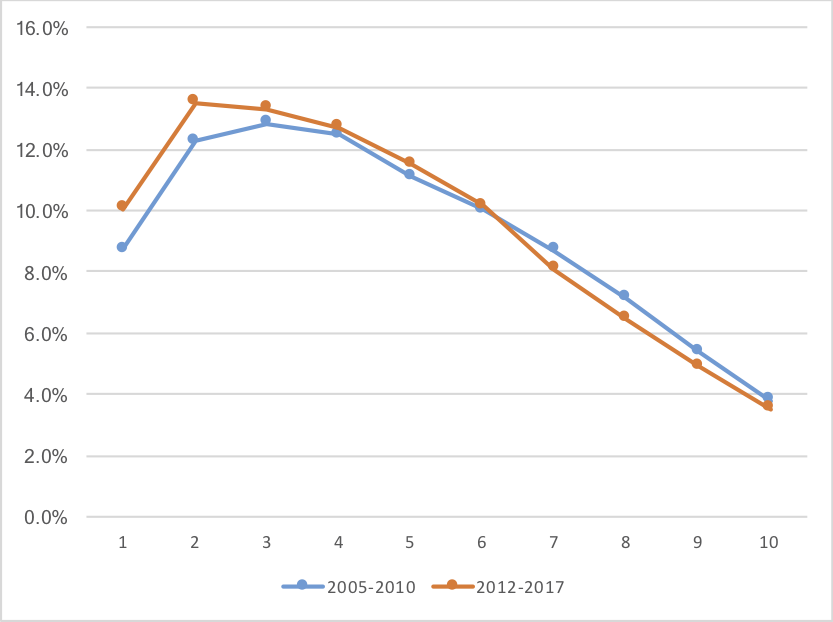Yesterday, I looked at how many players were active for at least one game by class year, both before and after the current CBA was adopted in 2011. Today, I want to do the same thing — analyze the production of players (by class year) from 2005 to 2010 and from 2012 to 2017. But instead of using games, I’ll use Approximate Value, and instead of using all players, I will use just defensive players.
On the X-Axis is all defensive players by class year, with the 2012-2017 players in blue and the 2005-2010 players in blue. On the Y-Axis is percentage of AV by all players. In general, second, third, and fourth year players produce the most AV, and that was true prior to the current CBA. But the new CBA imposes an artificially low cap on the amount that can be paid to players in their first four seasons (with few exceptions). As a result, teams seem to be giving more playing time and roster spots to players in their first four years, with 7th-8th-9th year players losing playing time:

Here is the same data but in table form:

One reason for this change has been the jump in playing time given to undrafted free agents in their first three seasons. That has increased by nearly 50%! From 2005 to 2010, UDFAs in their rookie, second, or third seasons were responsible for 5.0% of all AV by defensive players; from 2012 to 2017, that number has jumped to 7.4%. There were also, on average, 143 defensive players who were UDFAs in their first three seasons who played in at least one game from 2005 to 2010; from 2012 to 2017, that number jumped to 226 (an increase of nearly 60%).
Defensive players receive less attention and spotlight than offensive players, and they also have fewer stats to grade their effectiveness. The average fan (and maybe even the educated fan) can’t make a definitive statement about the talent or productivity of the 200th best defensive back in the NFL vs. the 400th best defensive back on the planet. So it’s a lot easier for teams to suggest that they will go young on defense rather than resign a mediocre veteran. As a result, the rookie wage scale increases the odds that a generally unworthy young defensive player will make a roster and decreases the odds that an average (or worse) older defensive player will make a roster. And this is not an unwise decision: saving money by going with an UDFA over a mediocre 7th-year linebacker may be the most efficient thing to do. It does, however, threaten to erode the overall quality of the league, to the extent that younger player is only being given a roster spot because he comes at a cheap price.
